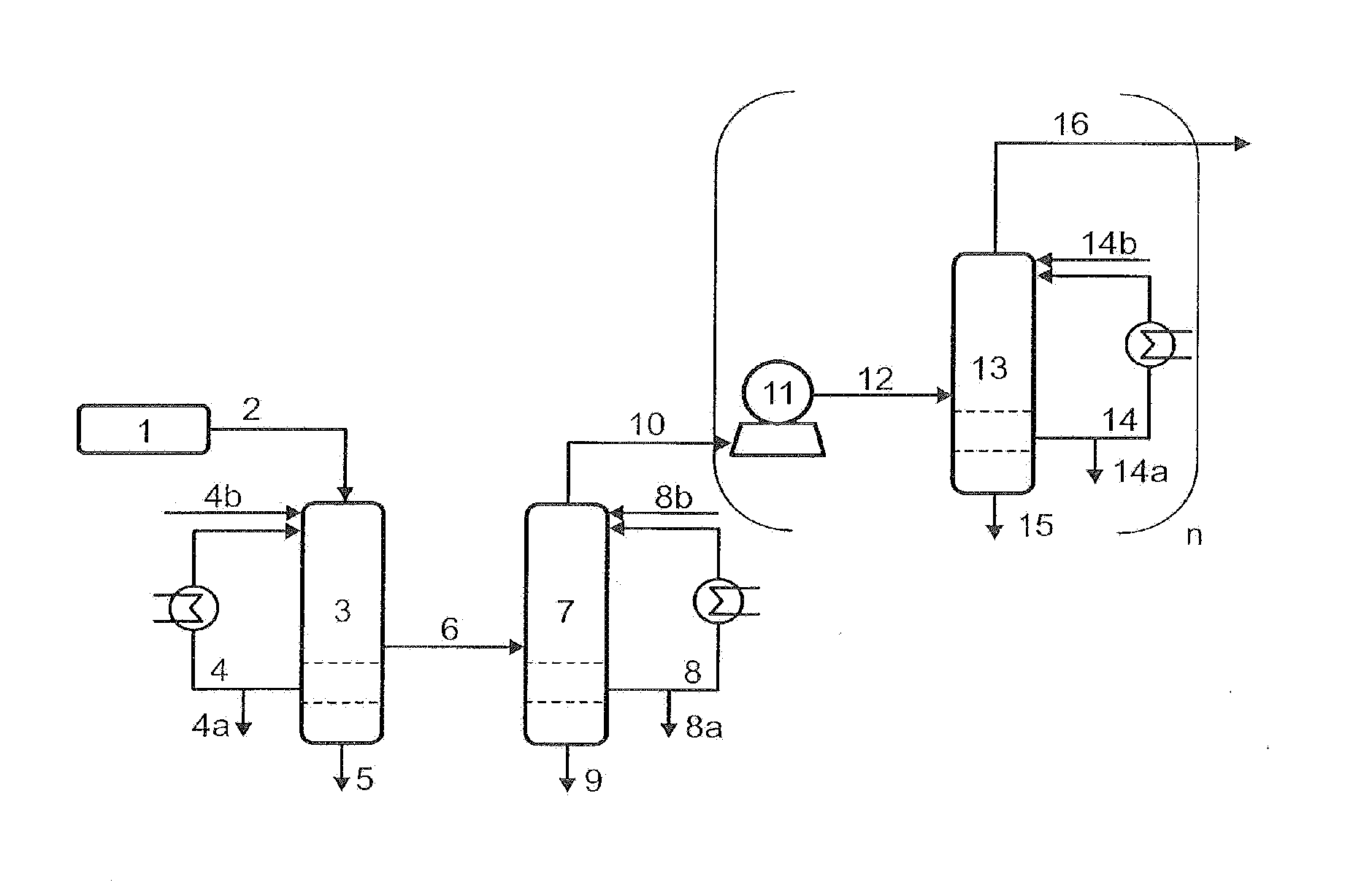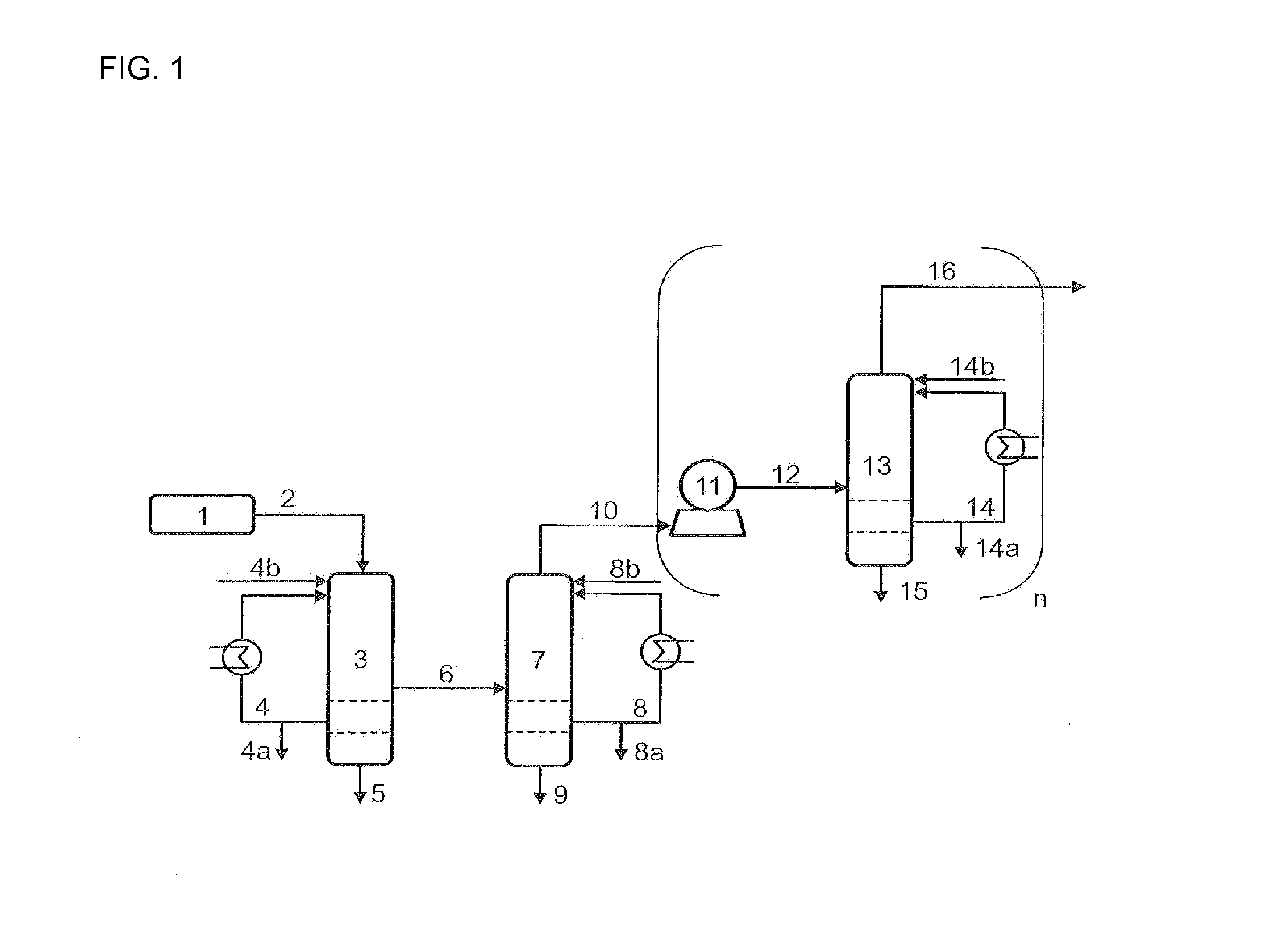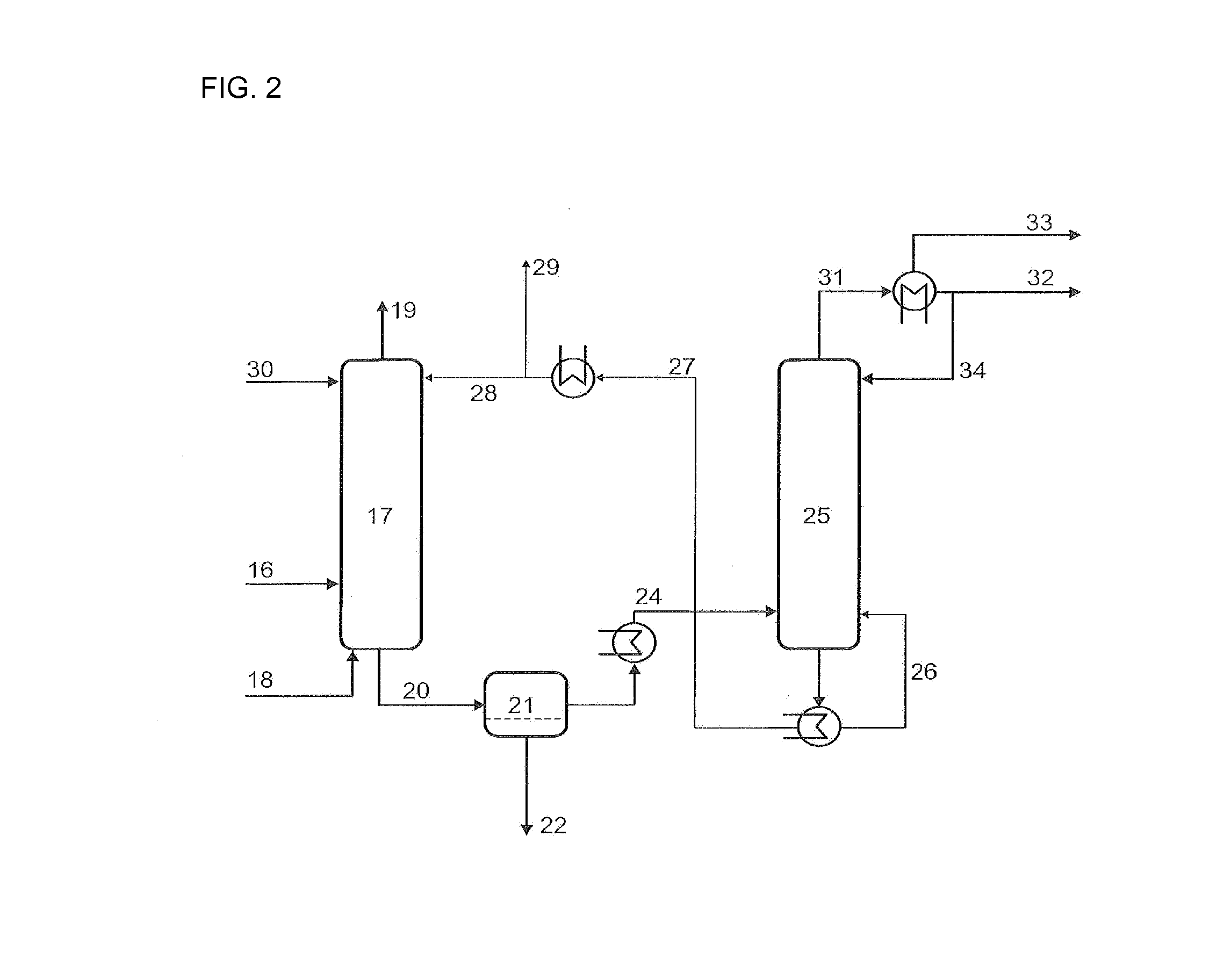Process for Preparing 1,3-Butadiene from N-Butenes by Oxidative Dehydrogenation
a technology of n-butenes and n-butenes, which is applied in the field of preparing 1,3-butadiene from n-butenes by oxidative dehydrogenation (odh), can solve the problems of not being able to work with a stoichiometric input of oxygen or complete oxygen conversion, not being able to avoid or control peroxides in upstream process steps, and not being able to achieve complete oxygen
- Summary
- Abstract
- Description
- Claims
- Application Information
AI Technical Summary
Benefits of technology
Problems solved by technology
Method used
Image
Examples
example
[0120]The example describes the use of toluene phases both in the quenching and compression stages and in the C4 absorption. In this way excellent dissolution of a number of high-boiling secondary components is effected in the quench and deposits downstream of the quench are prevented. In addition, the loss of C4-hydrocarbons dissolved in the discharged toluene is minimized by recirculation of the purge streams from the second quenching part, the intermediate cooler of the compressor and the C4-absorption / desorption in the recycle streams further upstream in the process.
[0121]A process gas 2 with a temperature of 210° C., a pressure of 1.3 bar and the composition shown in Table 1 is provided from the ODH reactor 1. This gas stream is brought to a temperature of 60° C. in the quenching section 3 by means of a toluene recycle stream having a temperature of 35° C. and a composition as shown in Table 1 in stream 4. Here, a number of the secondary components are dissolved out of the gas ...
example 2
[0127]The example describes the use of mesitylene in the quenching stage. Excellent dissolution of a series of high-boiling secondary components is in this way effected in the quench and deposits downstream of the quench are prevented.
[0128]A process gas 2 having a temperature of 190° C., a pressure of 1.3 bar and the composition shown in Table 3 is provided from the ODH reactor 1. This gas stream is, in the quenching part 3, cooled to a temperature of 71° C. by means of a mesitylene / water recycle stream 4 having a phase ratio of 8:1 (mesitylene:water) and a temperature of 35° C. Here, a series of secondary components are dissolved out of the gas stream and the composition of the process gas stream changes to the concentrations shown for stream 6. The mass ratio of the recycle stream 4 to the process gas 2 and to the purge stream 4a is 1:0.1:0.01. The stream 4b comprises firstly the purge stream 8a (2nd quenching stage) and secondly a make-up stream of fresh mesitylene / water in a ph...
PUM
| Property | Measurement | Unit |
|---|---|---|
| temperature | aaaaa | aaaaa |
| temperature | aaaaa | aaaaa |
| boiling | aaaaa | aaaaa |
Abstract
Description
Claims
Application Information
 Login to View More
Login to View More - R&D
- Intellectual Property
- Life Sciences
- Materials
- Tech Scout
- Unparalleled Data Quality
- Higher Quality Content
- 60% Fewer Hallucinations
Browse by: Latest US Patents, China's latest patents, Technical Efficacy Thesaurus, Application Domain, Technology Topic, Popular Technical Reports.
© 2025 PatSnap. All rights reserved.Legal|Privacy policy|Modern Slavery Act Transparency Statement|Sitemap|About US| Contact US: help@patsnap.com



